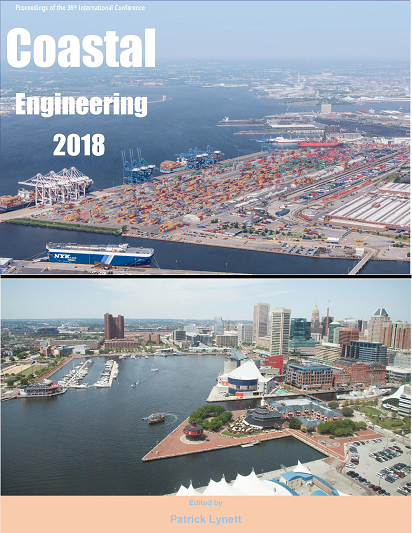Abstract
In recent years, due to the development of hardware and video image processing technology, image analysis technique using a wide coastal coastline, it made it possible to analyze the wave runup and swash, current and so on. However, in order to obtain the image information of a large area requires a high-resolution imaging at a high position, however, to the recording technique used in the past, there is a limit of height and resolution. Thus, recently, on the basis of remote sensing techniques, or build spatial information technology using UAV (Unmanned Aerial Vehicle) system, and the research and utilization in various fields it increased. Small UAV platforms is becoming low-cost, miniaturized hyperspectral imaging technology. The direct measurement of wave induce current is tested using image analysis techniques using sea dye maker and UAV. Specially, rip currents are approximately shore normal seaward flows which are strong, localized and rather narrow. In this method, UAV at a region with frequent wave induced current occurrence, and images are continuously obtained in real time. This research investigates the development of wave induced currents using images in East coast of Korea.References
Holland, K. T., Holman, R. A., and Sallenger, A. H. (1991): Estimation of overwash bore velocities using video techniques, Proceedings, Coastal Sediments '91. American Society of Civil Engineers, pp. 489-497.
Holland, K. T., and Holman, R. A. (1996): Field observations of beach cusps and swash motions, Marine Geology 134, pp. 77-93.
Mancini, F, Dubbini, M, Gattelli, M, Stecchi, F, Fabbri, SandGabbianelli, G (2013): Using Unmanned Aerial Vehicles (UAV) for High-Resolution Reconstruction of Topography, The Structure from Motion Approach on Coastal Environments, Journal of Remote Sensing, Vol. 5(12), pp. 6680-6898.
Christopher D Drummond;Mitchell D Harley;Ian L Turner; A Nashwan A Matheen1, William C Glamore, (2015): UAV Applications to Coastal Engineering, Australasian Coasts & Ports Conference

